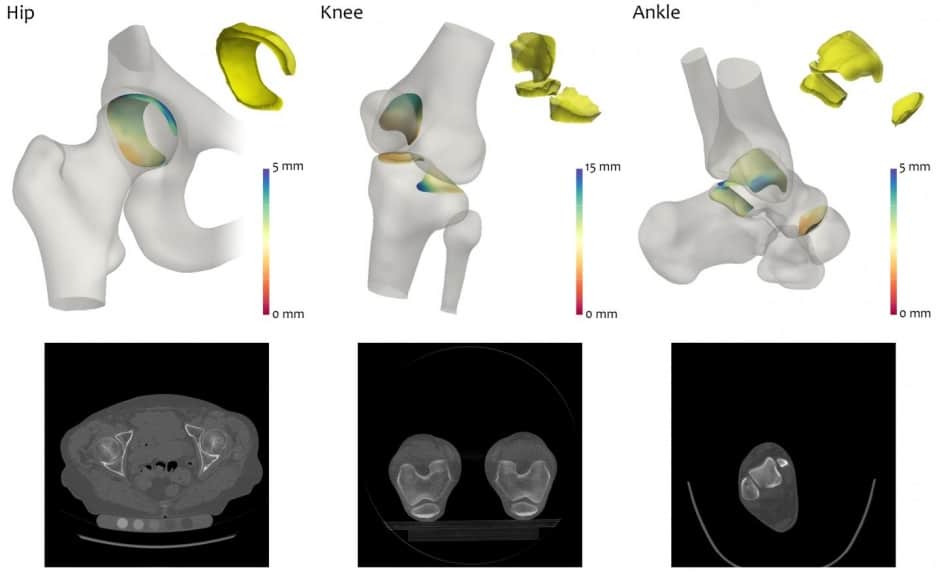CT scanning could help early diagnosis and monitoring of arthritis
A novel use for the established imaging technique could improve arthritis treatment options

Osteoarthritis is a painfully common condition, but hard to treat effectively and to diagnose early. It occurs when the cartilage that coats the ends of bones and joints wears away over time, leading to immobility and pain. Pain killers can help, but the only truly effective treatment is through surgery to replace cartilage or to implant replacement joints.
Diagnosis of osteoarthritis depends on x-ray imaging to detect narrowing of space between the bones in the joint. But this effect can be gradual and subtle and difficult to spot, depending on the judgement and experience of the clinician. Lack of sensitivity of x-rays can also make it difficult to detect changes in the joint over time.
Tom Turmezei of the engineering department at Cambridge University is working on new ways to detect and monitor osteoarthritis. "In addition to their lack of sensitivity, two-dimensional x-rays rely on humans to interpret them," he said. "Our ability to detect structural changes to identify disease early, monitor progression and predict treatment response is frustratingly limited by this."
Register now to continue reading
Thanks for visiting The Engineer. You’ve now reached your monthly limit of news stories. Register for free to unlock unlimited access to all of our news coverage, as well as premium content including opinion, in-depth features and special reports.
Benefits of registering
-
In-depth insights and coverage of key emerging trends
-
Unrestricted access to special reports throughout the year
-
Daily technology news delivered straight to your inbox










Water Sector Talent Exodus Could Cripple The Sector
Well let´s do a little experiment. My last (10.4.25) half-yearly water/waste water bill from Severn Trent was £98.29. How much does not-for-profit Dŵr...